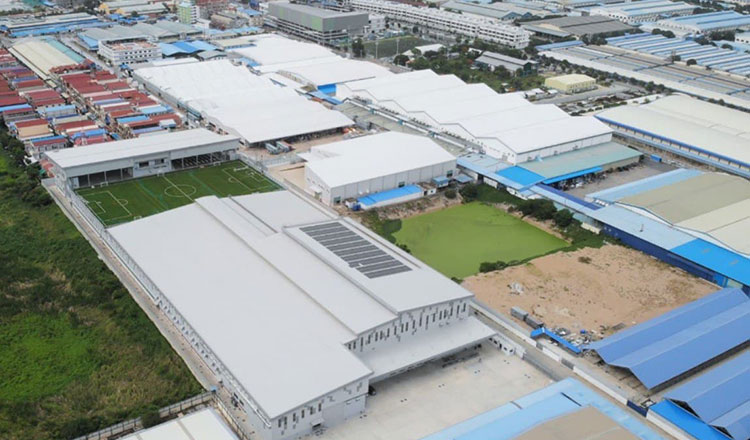Green Building Council seeks members and incentives to push agenda
Green buildings make use of technology to cut demand on energy and water, making use of wind and solar power… Developers are also encouraged to use low-impact materials, reuse existing products
The Cambodia Green Building Council (CamGBC) has been holding discussions with a broad cross-section of industry experts, financiers, academics and government officials to build its membership, seek input and raise awareness of the need to build cleaner and greener as the country seeks to meet its goal of achieving carbon neutrality by 2050.
CamGBC held a meeting on Friday, attended by around 30 architects, engineers, consultants, financiers, building material manufacturers, hoteliers and estate agents.
“An immense urban growth and sprawl have led to various issues all across our cities,” said CamGBC Chairman Chea Bunsean. “For example diminished open space and non-permeable surfaces intensify flooding. Urban heat islands make a city less liveable. We can see such trends in most cities in developing countries including Cambodia. Buildings and construction consume energy, resources for material production and generate high volumes of waste. Green building plays a pivotal role in a sustainable or resilient city.”
The council aims to offer an affordable option for Cambodia through its Cambodia Energy and Environmental Leadership (CAMEEL) certification scheme, with options for buildings, townships and infrastructure. It has already run two pilot projects with Phnom Penh garment manufacturer XO TEX, which supplies Adidas, and green office park complex Aquation Phnom Penh. CamGBC plans another four pilot projects this year.
CamGBC was launched just over two years ago to promote more sustainable, low carbon building practices in the country.
Location is important when planning a green building with easy access on foot or by bike to local facilities. Green buildings often make use of previously developed sites to avoid infringement of forested or protected land. Green buildings also make use of technology to cut demand for energy and water, making use of wind and solar power and using captured water. Developers are also encouraged to use low-impact materials, produced near the site or reuse existing products. Quality of life is also important with clean air in the buildings, natural light and outdoor views.
CamGBC ensures that anyone receiving CAMEEL certification proves that the building remains resource-efficient throughout its lifespan by re-certification every three years.
Attendees asked how CamGBC aimed to get buy-in for its certification from developers who may see no problem with paying the higher cost of the internationally-recognised Leadership in Energy and Environmental Design (LEED) certification. Bernard Sagaiyaraj, head of the council’s advisory board said government help was important.
“We definitely need the government on our side,” he said. “In this case the Ministry of Environment and other ministries because we are looking for incentives. Sometimes we are very incentivised people. Some of you are very focused ‘I don’t care about incentives. I want to build green and save the planet’. But the rest need some form of incentive, be it tax incentives or a small grant.”
CamGBC is also keen on educating the next generation. It has already provided training for around 200 university students.
“Our objective is to provide education on green building knowledge and also raise awareness because here, from my perspective, the young are more concerned about the environment, they are more concerned about sustainability. This is the reason we would like to continue our capacity building and training sessions at other universities,” said CamGBC Consultant Bovisal Sim.
Even with incentives and education, it may be time for the concept to reach full speed. Sagaiyaraj said his experience in Malaysia showed that it took around five to six years for green certification to become mainstream, although he said the timeframe may be shorter in Cambodia. Khmer Times

